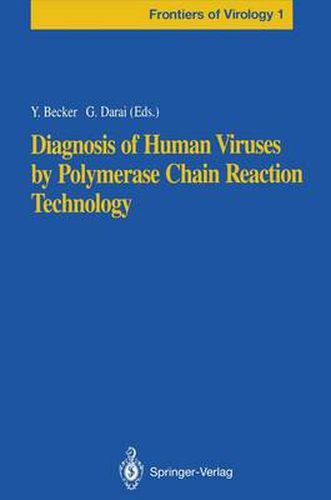Readings Newsletter
Become a Readings Member to make your shopping experience even easier.
Sign in or sign up for free!
You’re not far away from qualifying for FREE standard shipping within Australia
You’ve qualified for FREE standard shipping within Australia
The cart is loading…






This title is printed to order. This book may have been self-published. If so, we cannot guarantee the quality of the content. In the main most books will have gone through the editing process however some may not. We therefore suggest that you be aware of this before ordering this book. If in doubt check either the author or publisher’s details as we are unable to accept any returns unless they are faulty. Please contact us if you have any questions.
The basis for the effective treatment and cure of a patient is the rapid diagnosis of the disease and its causative agent, which is based on the analysis of the clinical symptoms coupled with laboratory tests. Although rapid advance ments have been made in the laboratory diagnosis of virus diseases, the neces sary isolation of the causative virus from the clinical specimens is a relatively long procedure. Viruses which integrate into the cellular DNA (such as human immunodeficiency virus, HIV -1, or hepatitis B virus) are difficult to identify by molecular techniques, while viruses which exist in the clinical material in low concentrations are even more formidable to identify. Recently, the application of the polymerase chain reaction (peR) technique developed by K. D. Mullis and detailed in the study by Saiki et al. (1985) led to a revolution in virus diagnosis. The peR technique was rapidly applied to the diagnosis of viruses in clinical material. Volume 1 of Frontiers of Virology provides new information on the advan tages of the use of the peR for the diagnosis of many human disease-causing viruses, as well as on some problems with its use.
$9.00 standard shipping within Australia
FREE standard shipping within Australia for orders over $100.00
Express & International shipping calculated at checkout
This title is printed to order. This book may have been self-published. If so, we cannot guarantee the quality of the content. In the main most books will have gone through the editing process however some may not. We therefore suggest that you be aware of this before ordering this book. If in doubt check either the author or publisher’s details as we are unable to accept any returns unless they are faulty. Please contact us if you have any questions.
The basis for the effective treatment and cure of a patient is the rapid diagnosis of the disease and its causative agent, which is based on the analysis of the clinical symptoms coupled with laboratory tests. Although rapid advance ments have been made in the laboratory diagnosis of virus diseases, the neces sary isolation of the causative virus from the clinical specimens is a relatively long procedure. Viruses which integrate into the cellular DNA (such as human immunodeficiency virus, HIV -1, or hepatitis B virus) are difficult to identify by molecular techniques, while viruses which exist in the clinical material in low concentrations are even more formidable to identify. Recently, the application of the polymerase chain reaction (peR) technique developed by K. D. Mullis and detailed in the study by Saiki et al. (1985) led to a revolution in virus diagnosis. The peR technique was rapidly applied to the diagnosis of viruses in clinical material. Volume 1 of Frontiers of Virology provides new information on the advan tages of the use of the peR for the diagnosis of many human disease-causing viruses, as well as on some problems with its use.